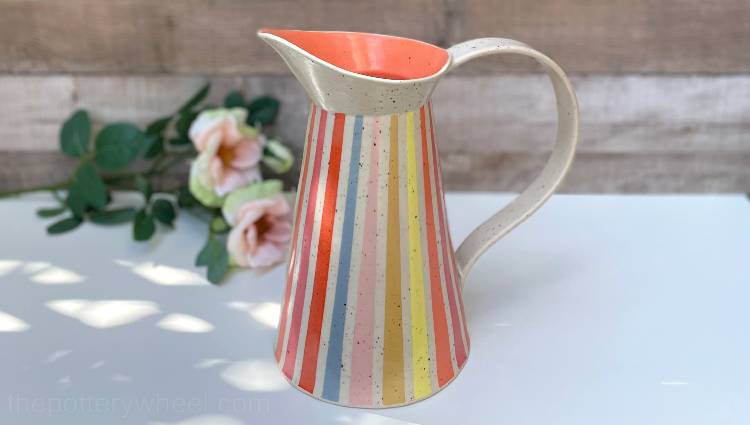Your cart is currently empty!
How to Identify Bone China – 7 Tips for Spotting Bone China
Published:
Last Updated:
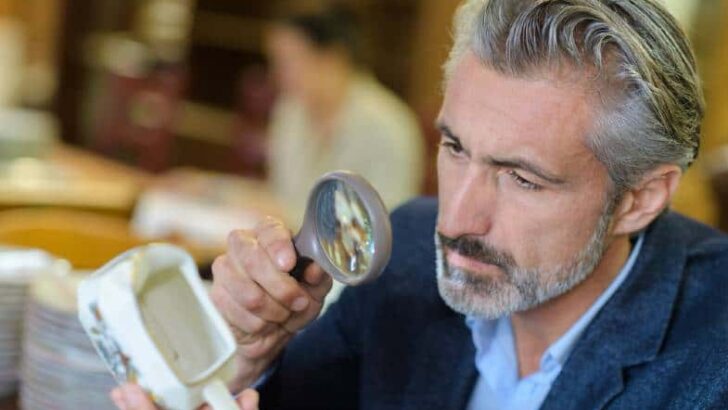
Affiliate Disclaimer
As an affiliate, we may earn a commission from qualifying purchases. We get commissions for purchases made through links on this website from Amazon and other third parties.
Bone china is very popular due to its high level of whiteness, translucency, and durability. Nonetheless, due to the complex process used to manufacture it, the product has become very expensive. As a result, numerous counterfeit products still exist in the market. So, if you have some bone china how do you know it’s real? Exactly how do you identify bone china?
Luckily, there are different methods you can employ to distinguish between fake and genuine bone china. For instance, ensure you check the back stamp and identify the manufacturer, product specification, and country of origin. Additionally, since bone china is so sturdy, it can be made thinner than other porcelains, making them slightly translucent.
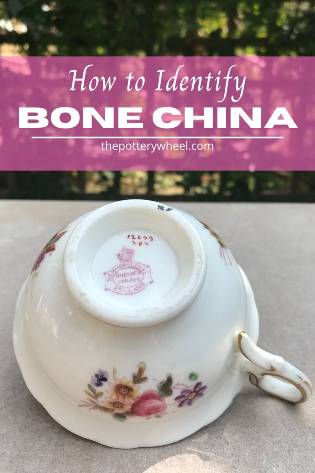
Different Ways to Identify Bone China
Here are some top tips when trying to identify bone china.
Tip 1) It Should Be Translucent
If you are going for an antique piece, it might be hard to read the markings and trademarks included at the back of most products. Therefore, you have to rely on other methods.
One of the stand out features of bone china is its sturdy nature. As such, it can be made thinner than other porcelains giving it a more translucent nature. There are two methods you can use to test the translucency of your kitchenware.
First, you can try to hold it up to the light; if you can see your finger through the mug, then your product is genuine. Another method is to place the bone china over a flashlight in a dark room. Real bone china will allow a certain degree of light to pass through it.
Tip 2) Identify the Back Stamp
If you are buying plates or cups, flip them over. There is a back stamp that is found at the back and center of the plate. The back stamp contains information such as the name of the manufacturer, the pattern name, and the date when the product was made.

via Wikimedia Commons
Most if not all bone china is labeled as such. Most manufactures also include the country of origin. The back stamp can be painted, printed, or incised on the product. Nonetheless, you should also pay close attention to who the manufacturer is.
Ensure that you take a photo of the hallmark and make sure that it is clear enough. Use the image to relate it to other hallmarks found in pottery and porcelain books or the websites containing the same information.
The hallmark can lead you to the manufacturer of the Bone china and reveal its age. The age and condition of the product will determine whether it’s real and how valuable it is. Some of the leading brands include Wedgwood, Lorenzo, Royalty Porcelain, and Lorren.
Tip 3) Identify the Pattern
You can also check the numbers inside or close to the hallmark. Genuine Bone china will have a series of three to four numbers. The numbers are used to identify the product. Check the pattern and the year and compare it with products available on the manufacturer’s website to determine the value of the bone china.
Other patterns to look out for include a gold edge and floral/leafy designs. Some might even include pictures of people, animals, and birds. These patterns will help you identify the manufacturer.
Carefully analyze things such as borders, corner work, and consistency. If you are keen enough, you might gather the information that will help you determine who the manufacturer is and the age of the piece.
To do this, visit several websites that are focused on identifying, selling, and buying chinas. Compare the patterns you identified with those found in such sites, and you might be able to identify your bone china accurately.
Tip 4) Consider the Weight of the Item
One of the stand out features of bone china is that it is light and robust at the same time. This gives it a delicate and elegant feel. However, the thinness does not make the product any less sturdy.
This is because bone ash is added to the bone china product during production, making it stronger, softer, less likely to break, and less brittle.
Also, other porcelains are forged at a higher temperature, making them thicker and heavier. In particular, the average weight of regular porcelain or ceramic coffee mugs is usually from 250-400 grams. On the other hand, you can find bone china mugs that weigh less than 200 grams.
Tip 5) Check the Country of Origin
The most expensive bone china originates from England. This is because the process of using bone ash originated there. Check for a crown on the hallmark that identifies that the product is from England.
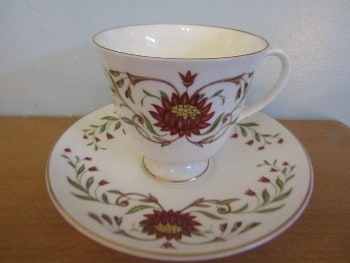
via Wikimedia Commons
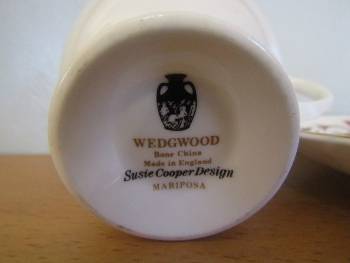
via Wikimedia Commons
Current manufacturers sometimes use modern colors on items, such as lime green, teal, and purple. This is being done to reduce prices and attract customers.
Tip 6) Listen to the Sound it Makes
To listen to the sound that the bone china produces, you have to do a test. Hold a mug gently on your palm and use another mug to knock on the bone china mug and listen carefully. A genuine Bone china mug will have a long echo, and the sound is soothing.
Tip 7) The Cost of the Ceramic Piece
Bone china products are costly compared to other porcelain products. For instance, an ordinary bone china coffee cup costs about 26 US dollars, while a porcelain coffee cup roughly costs 2 US dollars. So, the price of a piece of ceramic ware is an indicator of its progeny.
However, the cost will be determined by the online site you use to order and the shipping costs. Bone china will be more expensive if the item is a rare item from a renowned manufacturer.
Bone china items are expensive because of their durability and their lightweight. The process used to make Bone china is also lengthy and costly. However, check the percentage of bone in the product before purchase. The higher the rate of bone ash, the higher the cost of the product.
For example, if the manufacturer increases the percentage of bone ash from 25% to 45%, the brightness index will be rise from 89 to 96, respectively. More bone ash in the bone china makes the product softer, less brittle, and more durable, making it more expensive.
Final Thoughts
Since bone china is very expensive, a lot of traders are selling counterfeit products to unknowing customers. If you plan to acquire this kitchenware, you must know how to identify bone china.
You can utilize any of the methods listed above. However, if you are new to porcelains, we recommend you seek the services of a qualified expert. This is especially if you intend on purchasing expensive pieces.

